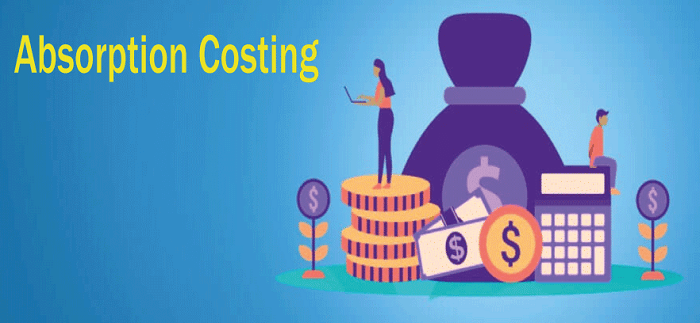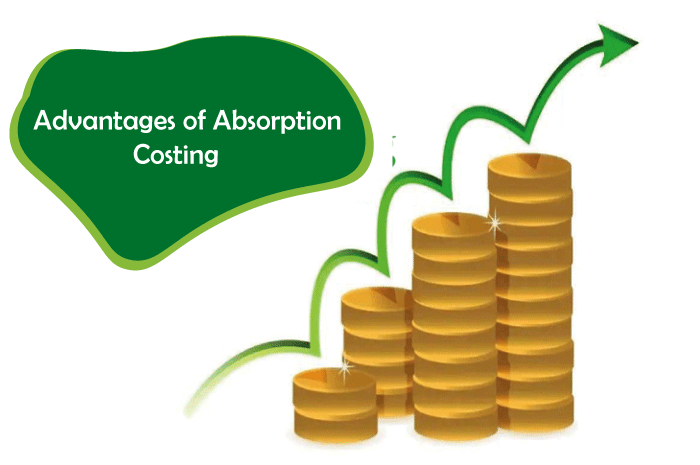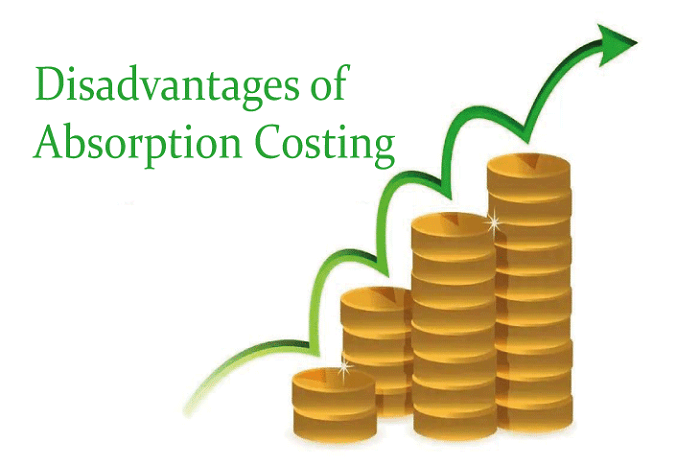Absorption Costing Explained, With Pros and Cons and ExampleWhat exactly is Absorption Costing?Businesses must choose between two popular costing approaches in their accounting systems, namely absorption costing and variable costing, both of which have advantages and disadvantages. 
Absorption costing, in particular, accounts for all manufacturing or production costs, such as direct materials, direct labor, rent, and insurance. In-Depth Understanding of Absorption CostingVariable costs, fixed costs, and semi-variable costs are all observed in absorption costing. Variable costs vary according to the proportion of goods produced, and fixed costs remain constant regardless of production volume. Semi-variable costs rise or fall in batches based on specific factors. Accounting methods and procedures typically include absorption costing. The cost of inventory at the end of an accounting period is determined by absorption costing. The closing inventory also includes fixed costs, which raises the inventory's value. This method of inventory valuation increases the company's profit. Absorption costing is also known as full costing because it includes all production costs. Direct labor and material costs are examples of variable costs. Rent, security, and insurance are examples of fixed costs. Electricity charges for the factory are among the semi-variable costs. Thus, under full costing, all expenses are absorbed by the product, regardless of the product sold. Unlike variable costing, which considers only variable costs, absorption costing allows for precise accounting for the overall cost of production. The absorption costing method provides for reporting a high profit with a high value of closing inventory. This is because the production cost has been completely absorbed in this costing approach. What are the components of Absorption Costing?Direct and indirect costs are both included in absorption costing. Direct costs can be directly linked to a particular product or service. These costs may include raw materials, labor, and other direct expenses incurred during the manufacturing process. Indirect costs cannot be associated with a specific product or service. These expenses, also known as overhead expenses, include utilities, rent, and insurance. The majority of indirect costs are assigned to products or services based on some measure of activity, such as the number of units produced or the number of direct labor hours required to manufacture the product. Absorption costing incorporates both direct and indirect costs into a product's price. This means that a product's price includes the direct costs of manufacturing units and a portion of the indirect costs incurred during the manufacturing process. The total manufacturing costs are divided by the number of units produced to determine the cost of each unit. What are the advantages of Absorption Costing?
GAAP ComplianceOne of the clearest advantages of absorption costing is that it is GAAP compliant and is accepted for IRS (Internal Revenue Service) reporting. Accounting for All Costs of ProductionAbsorption costing, unlike variable costing, considers all production costs rather than just direct costs. The fixed costs of the operation of a business, such as salaries, facility rentals, and utility bills, are also included in absorption costing. A far more complete picture of the cost per unit of a product line can assist company management in determining better pricing and profitability. Profit TrackingIt also provides a more accurate picture of profitability than variable costing, especially when a company's products are not all sold during the same accounting period. This is important if a company increases production in preparation for a seasonal increase in sales. What are the disadvantages of Absorption Costing?
Skewed Profit and LossIt has the potential to make a company's profit appear higher than it is during a given accounting period. This happens because fixed costs are only deducted from revenues if all of the company's manufactured products are sold. This could deceive company executives and investors by skewing a profit and loss statement. No Effect on Operational EfficiencyVariable costing provides a better analysis of cost and volume than absorption costing. Suppose fixed costs constitute a significant portion of total production costs. Determining cost variations at different production levels is difficult in that particular instance. This makes management's ability to make the best operational decisions more difficult. Unsuitable for Product Line ComparisonFor example, suppose that a company wishes to compare the potential profitability of various product lines. In that scenario, variable costing outperforms absorption costing. Focusing purely on the variable costs directly related to production makes it easier to differentiate between the benefits generated by producing one commodity versus another. Absorption Costing Vs. Variable CostingTwo costing methods are used to determine the price of a product or service: absorption costing and variable costing. While both methods determine the price of the product, the expenses involved and the purposes for which they are used differ from each other. Under absorption costing, all direct and indirect manufacturing costs are included in the cost of the product. This implies that each product unit's price includes direct production costs, such as raw materials and labor, and indirect manufacturing costs, such as overhead expenses. External reporting employs absorption costing, such as calculating the cost of goods sold for financial statements. Variable costing, on the other hand, incorporates only direct costs into the cost of a product. In variable costing, indirect costs are not included in the product price. Instead, they are classified as period expenses. They are recorded in the income statement in the period they occur. Variable costing is commonly used for management decision-making and planning because it provides a more accurate representation of the incremental costs associated with producing an extra product unit. Variable costing does not determine the per-unit cost of fixed overheads, whereas absorption costing does. The term "dividend" refers to the amount of money paid out in the form of a lump sum payment rather than a lump sum payment. Fixed overhead costs associated with the cost of goods sold and those associated with inventory are generated by absorption costing. Absorption Costing ExampleAssume a company named JTP is known for creating widgets. It produced 10,000 widgets in January, of which 8,000 were sold by the end of the month, leaving 2,000 in inventory. Suppose each widget requires $5 in labor and materials directly related to the item. Furthermore, the production facility has fixed overhead costs of $20,000 per month. In that case, JTP will add $2 to each widget under the absorption costing method to cover fixed overhead costs ($20,000 total ÷ 10,000 widgets produced in the month). Absorption costs will become $7 per unit ($5 for labor and materials plus $2 for fixed overhead costs). Due to the sale of 8,000 widgets, the total cost of goods sold is $56,000 ($7 total cost per unit of 8,000 widgets sold). Thus, the remaining inventory will be worth $14,000 in the form of widgets ($7 total cost per unit for 2,000 widgets). What are the types of Absorption Costing?Absorption costing is usually classified into two types, such as:
When does Absorption Costing make sense?Businesses frequently use absorption costing to calculate the total cost of producing a product or providing a service. This includes instances where a company is required to report financial results to external stakeholders such as shareholders or regulatory agencies. Absorption costing is also frequently used for internal decision-making, such as determining a product's selling price or deciding whether to continue producing a specific product. In such cases, the company may employ absorption costing to determine the total cost of producing the product and whether the product generates enough profits to justify continued production. The Bottom LineAbsorption costing is a method that incorporates all fixed and variable manufacturing costs into the price of a product. It is also accepted in generally accepted accounting principles (GAAP) for reporting accounts under several statutory provisions. The fixed cost per unit produced reduces with increasing output in this manner. This contrasts variable costing, where total output carries the same variable production costs. Furthermore, the variable costing approach does not accurately portray accounting earnings and losses. |
 For Videos Join Our Youtube Channel: Join Now
For Videos Join Our Youtube Channel: Join Now
Feedback
- Send your Feedback to [email protected]
Help Others, Please Share









